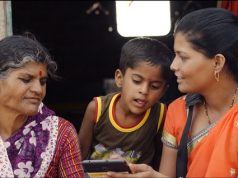Long Way To Go: India Ranks 110th Among 149 Countries For SDGs
India holds 110th position among 149 United Nations (UN) member countries in terms of Sustainable Development Goals (SDG) agreed upon by countries in 2015 according to the newly developed SDG Index. India’s overall index score of 48.4 indicates that India is on average 48.4% of the way to the best possible outcome across the 17 SDGs.
The SDG Index and SDG Dashboards are developed by the Sustainable Development Solutions Network (SDSN) and the Bertelsmann Stiftung to provide a report on tracking of SDGs’ achievement and assist countries implementing the new SDGs.
The SDGs aimed at 2030 are universal agenda of sustainable development, calling on all nations to pursue a holistic strategy that combines economic development, social inclusion, and environmental sustainability. The 17 SDGs agreed at the UN on September 25, 2015 embody a shared global vision of how to combine these three dimensions of sustainable development into action at the local, national, and international levels.
The SDG Index and the SDG Dashboards show that even many high income countries fall far short of achieving the SDGs. Sustainable development includes three pillars – economic development, social inclusion, and environmental sustainability – supported by good governance. It is also the case, however, that the poorest countries in the world tend to be near the bottom of the ranking. T
Scandinavian countries Sweden, Denmark and Norway are stand at the top three positions in the index with scoring of 84.5%, 83.9% and 82.3% respectively. African countries- Democratic Republic of the Congo, Liberia and Central African Republic are the last three countries listed in the SDG index with scoring of 31.3%, 30.5% and 26.1% respectively.
European countries have fared well in the SDGs with top 10 countries in the index being from Europe. United Kingdom ranks at the 10th position. Japan is at the 18th level, United States at the 25th level and China is at the 76th level in the index.
Bhutan ranks at 82nd level followed by other Asian countries Sri Lanka (97), Nepal (103), Iraq (105), India (110), Pakistan (115), Myanmar (117), Bangladesh (118) and Afghanistan (139).
The Dashboard lists 17 SDGs and various indicators under each SDG with scoring for value and rating in colours for each one of them. Each goal coloured as ‘green,’ ‘yellow,’ or ‘red’, indicates whether the country has already achieved the goal (green), is in a “caution lane” (yellow), or is seriously far from achievement as of 2015 (red).
India has red colour rating for most of the SDGs except SDG10- ‘Reduced Inequalities’ and SDG 17- ‘Partnership For The Goals’.

SDG Dashboard of India; Red colour on the goals specify long way for the achievement of goals and yellow colour indicates India is in the caution lane for those goals
“The dashboards for East and South Asia outperform many other developing regions on the SDGs, but several challenges do remain. While tremendous progress has been made on reducing extreme income poverty (SDG 1), the dashboards show that the region faces major SDG challenges in health (SDG 3), in particular relating to health systems and some infectious diseases) and education (SDG 4). SDG 2 (improved nutrition and sustainable agriculture) comes up as red across the region since countries either face high levels of malnutrition and stunting or unsustainable agricultural practices,” states the report.
According to the study, there are still significant shortfalls on ensuring access to basic infrastructure services (SDGs 6, 7, 9) across the East and South Asia. Many countries face major challenges on ensuring gender inequality (SDG 5) and promoting environmental sustainability (SDGs 11, 12, 13, 14, 15, as well as SDG 2 on sustainable agriculture). Overall, the dashboards show that the region needs to better balance its economic performance with environmental sustainability.
While India is moving high towards development, it becomes immensely important to ensure that the growth is sustainable. The SDGs are aimed to be achieved by 2030 but efforts for the same have to begin now. India as a country with efforts from government, corporate sector and citizenry will have to keep in mind the social responsibility. The 17 Sustainable development goals as crafted and agreed upon globally are crucial in the overall development of the nation.
Thank you for reading the story until the very end. We appreciate the time you have given us. In addition, your thoughts and inputs will genuinely make a difference to us. Please do drop in a line and help us do better.
Regards,
The CSR Journal Team













